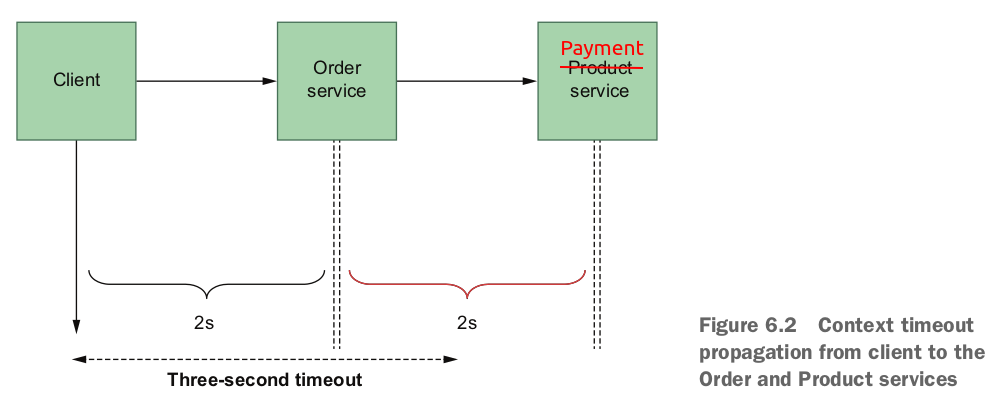Timeout Pattern
What is context.Context? The context in Go enables you to specify deadlines, cancellation signals, or key-value pairs available between processes.
context.WithDeadline requires a target date as a parameter, but there is an easier step: context.WithTimeout, a wrapper for WithDeadline that allows you to specify a timeout value instead of calculating the target date from the current time.
Both functions take a parent context, context.Background(), which in our case is an empty context without a deadline.
context.WithTimeout and context.WithDeadline both return two values: context and cancellation functions. You can call the cancellation function to halt any further execution within that context, as needed. More concretely, you can call three competing endpoints with the same context, then cancel the context for the remaining two when the first endpoint finishes and returns a value. This way, you do not have to wait for other endpoint responses that are no longer needed.
Another advantage of using context is propagating context information between services. In gRPC, context is available on both the client and server sides. That means that if there are three services to fulfill an operation, the initial context can be propagated to the final one without extra context definition on the second and third services. For example, I know that the order operation should take at most three seconds to complete, and in our scenario, the Order service calls the Payment service, then the Shipping service. We can create a context with a three-second timeout and use it in three services (figure 6.2).





 浙公网安备 33010602011771号
浙公网安备 33010602011771号